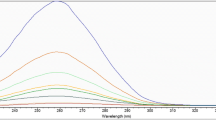Abstract
Sweet potato virus disease (SPVD), which causes severe crop losses in Africa, is caused by a complex of sweet potato feathery mottle potyvirus (SPFMV) and sweet potato chlorotic stunt crinivirus (SPCSV). Extraction of pure RNA (for diagnosis by reverse transcriptase polymerase chain reaction [RT-PCR] methods) from diseased sweet potato proved to be difficult using five different total-RNA extraction procedures: (a) that of Chomczynski and Sacchi (1) (b) an adaptation of Lodhi et al., (2) and three commercially available kits (c) Clonsep (Clontech, Clontech Labs Inc, Palo Alto, CA; (d) RNeasy (Qiagen, West Sussex, UK); and (e) RNA isolator (Genosys Biotechnologies). Four of these methods (b-e) generated sufficient RNA, but it was unsuitable for RT-PCR amplification of SPFMV. When these RNA samples were treated with Wizard DNA extraction resin (Promega), the inhibitors of RT-PCR were consistently removed from three (b-d) of these four samples. Another deproteinating step was needed to allow RT-PCR amplification of sample e. The Wizard DNA column purification in conjunction with one of these total RNA extraction methods facilitates quick and reliable extraction of pure RNA for diagnostic purposes and might be suitable for similar problematic plant material.
Similar content being viewed by others
References
Chomczynski, P. and Sacchi, N. (1987) Single-step method of RNA isolation by acid guanidinium thiocyanate-phenol-chloroform extraction.Analyt. Biochem. 162, 156–159.
Lodhi, M. A., Ye, G. N., Weeden, N. F., and Reisch, B. I. (1994) A simple and effective method for DNA extraction from grapevine cultivars andVitis species.Plant Mol. Biol. Reporter 12, 6–13.
Mukiibi, J. (1977) Effects of mosaic on the yield of sweet potatoes. Proceedings of the 4th International Society for Tropical Root Crops. CIAT, Cali, Columbia, pp. 169–170.
Hahn, S. K. (1979) Effects of viruses (SPVD) on growth and yield of sweet potato.Exp. Agric. 15, 253–256.
Gibson, R. W., Mpembe, I., Alicai, T., Carey, E. E., Mwanga, R. O. M., Seal, S. E., and Vetten, H. J. (1998) Symptoms, aetiology and serological analysis of sweet potato virus disease in Uganda.Plant Pathol. 47, 95–102.
Schaefers, G. A. and Terry, E. R. (1976) Insect transmission of sweet potato disease agents in Nigeria.Phytopathology 66, 642–645.
Colinet, D., Nguyen, M., Kummert, J., and Lepoivre P. (1998) Differentiation among potyviruses infecting sweet potato based on genus- and virus-specific reverse transcription polymerase chain reaction.Plant Dis. 82, 223–229.
Abad, J. A., Conkling, M. A., and Moyer, J. W. (1992) Comparison of the capsid protein citron from serologically distinct strains of sweet potato feathery mottle virus (SPFMV).Arch. Virol. 126, 147–157.
Sambrook, J., Fritsch, E. F., and Maniatis, T. (1989)Molecular Cloning: A Laboratory Manual. Cold Spring Harbor Laboratory, Cold Spring Harbor, New York.
Author information
Authors and Affiliations
Rights and permissions
About this article
Cite this article
Fenby, N.S., Seal, S., Gibson, R.W. et al. RNA extraction from virus-diseased sweet potato for reverse transcriptase polymerase chain reaction analysis. Mol Biotechnol 10, 187–190 (1998). https://doi.org/10.1007/BF02760865
Issue Date:
DOI: https://doi.org/10.1007/BF02760865




